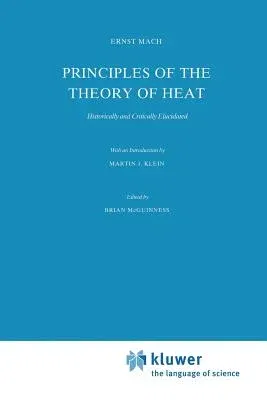Ernst Mach
(Author)Principles of the Theory of Heat: Historically and Critically Elucidated (Softcover Reprint of the Original 1st 1986)Paperback - Softcover Reprint of the Original 1st 1986, 13 October 2011

Qty
1
Turbo
Ships in 2 - 3 days
In Stock
Free Delivery
Cash on Delivery
15 Days
Free Returns
Secure Checkout
Part of Series
Vienna Circle Collection
Print Length
458 pages
Language
English
Publisher
Springer
Date Published
13 Oct 2011
ISBN-10
9401085544
ISBN-13
9789401085540
Description
Product Details
Author:
Book Edition:
Softcover Reprint of the Original 1st 1986
Book Format:
Paperback
Country of Origin:
NL
Date Published:
13 October 2011
Dimensions:
23.39 x
15.6 x
2.46 cm
ISBN-10:
9401085544
ISBN-13:
9789401085540
Language:
English
Location:
Dordrecht
Pages:
458
Publisher:
Series:
Weight:
671.32 gm

